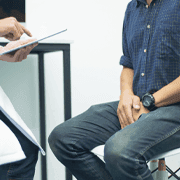KUB X-Ray Study: Understanding The Kidney, Ureter, and Bladder X- Ray
In This Article
KUB X-Ray Study: Understanding The Kidney, Ureter, and Bladder X- Ray
Jaymala
Updated on June 11, 2024
Medically verified by Dr. Arya
Fact checked by Dr. Pournami

Urology
5 min read
Let’s explore the basics of KUB X-ray, one of the best in analysing the urinary system’s functioning.
Are you clueless about what it is? Do not worry. We’re here to keep you informed.
Join Mykare Health as we uncover the basics and procedures of KUB X-ray. Let’s see how it plays a major role in revealing the mysteries within our bodies.
What is KUB X-Ray?
The kidney, ureter, and bladder X-Ray, usually called KUB X-Ray, is a diagnostic imaging procedure that provides detailed images of the urinary system. This technique is especially used to assess the structures and function of your kidneys, ureters and the bladder. KUB X-Ray is employed to find out the size, shape, and position of the kidneys, ureters, and bladder.
Preparation for KUB X-Ray
How should you prepare for it?
- You may be required to fast for a certain period before the procedure.
- Ensure that you are well-hydrated to facilitate the passage of contrast material.
- You will be asked to change into a hospital gown, remove any metallic objects or clothing that could interfere with the X-Ray images.
 6 min read
6 min readWhat is Stapler Circumcision - Everything You Need to Know
 8 min read
8 min readIs Circumcision Good or Bad - Here's How to Find Out
 8 min read
8 min readCircumcision - Scientific Guide to All Your Questions
Get a Callback Now
Procedure for KUB X-Ray
What is the procedure for this?
- You will be positioned in an upright or supine position. Proper positioning is important.
- You will be asked to remove any metallic objects.
- Lead aprons or shields may be used to protect certain parts of your body from unnecessary radiation exposure, particularly in the case of reproductive organs.
- The X-Ray machine is adjusted to focus on the region of interest, which includes the kidneys, ureters, and bladder.
- Sometimes, multiple views may be taken from different angles.
- The radiologic may guide you through particular breathing instructions or positioning adjustments during the procedure.
Patient Positioning
What should be your position during this procedure?
Your positioning is important in this case. There are two positions - upright (standing) and supine (lying down). The position will be finalised based on your individual need and requirement.
- In the upright position, you will stand facing the X-Ray machine.
- In the supine position, you will lie on your back on the X-Ray table.
- Your body should be properly placed, to ensure accurate imaging of the kidneys, ureters, and the bladder.
- You will be required to hold your breath as it will provide a stable and clear image.
- Aids such as pillows, may be used to help you maintain a stable position during the procedure.
Interpreting KUB X-Ray Images
What is interpreted in KUB X-Ray images?
- Radiologists assess the size, shape, and position of these structures on the X-Ray images.
- Kidney stones can be identified as dense shadows in the kidney area.
- Symmetry between the left and right sides of the urinary system is evaluated.
- If available, previous KUB X-Ray images are compared to identify changes over time.
Know More About Kidney Stone Treatment
Indications for KUB X-Ray
What are the indications for KUB X-Ray?
- Patients experiencing unexplained abdominal pain may undergo KUB X-Ray to investigate potential causes, such as kidney or bladder stones.
- KUB X-Ray is useful in diagnosing urinary tract obstructions, which can occur due to various reasons such as tumours, or other abnormalities.
- Patients with a history of kidney stones may undergo KUB X-Ray to monitor the effectiveness of treatment to track the progress of stone removal.
Cost of KUB X-Ray
What is the cost of this test in different cities?
In Delhi, the price of this test is around Rs 600-Rs 1620.
The price of this test in Chennai is around Rs 990-Rs 1600
Limitations
What are its limitations?
- KUB X-Ray study involves radiation exposure.
- Non-radiopaque stones, such as those composed of uric acid, may not be readily visible.
- The method provides only static images and lacks any other information about the kidney blood.
Post-procedure care and follow-up
Any immediate reaction should be monitored carefully as:
- In most cases, you can resume normal activities immediately after a KUB X-Ray.
- Drinking plenty of fluids after the procedure is encouraged.
- You can continue with your usual medications.
- You may experience mild discomfort or soreness.
What is the difference between KUB and X-Ray?
A KUB radiograph is an X-ray performed for the purpose of examining the urinary system and its surrounding areas.
Radiation exposure and safety
What is the radiation dose in it? How much is safe?
- The radiation dose in this method is comparatively low compared to other imaging modalities like CT scans.
- Healthcare providers use the lowest possible radiation dose which still provides the necessary diagnostic information.
- Pregnant patients should inform healthcare providers.
- In paediatric patients, efforts are made to adjust the radiation dose to their size and age.
Kidney, ureter, and bladder is a diagnostic procedure which is used to check the abdominal area or the organs and structures of the urinary and/or gastrointestinal system.
Patient is prepared for the test beforehand. It involves fasting, hydration, and sometimes the administration of contrast agents.
During this procedure, patients are positioned to get the clear images of the urinary system. Metallic objects, jewelry etc., are removed, and protective shielding may be used.
KUB X-Ray has its own limitations, as it involves exposure to radiation.
After KUB X-Ray, patients can continue with normal activities. Hydration and follow-up appointments are encouraged.
The radiation dose in KUB X-Ray is kept as low as reasonably achievable. Safety measures include the use of lead aprons, and sticking to the ALARA principle (As Low As Reasonably Achievable).
Clear communication between healthcare providers and patients is necessary.
Source Links
Ganesh Diagnostic



